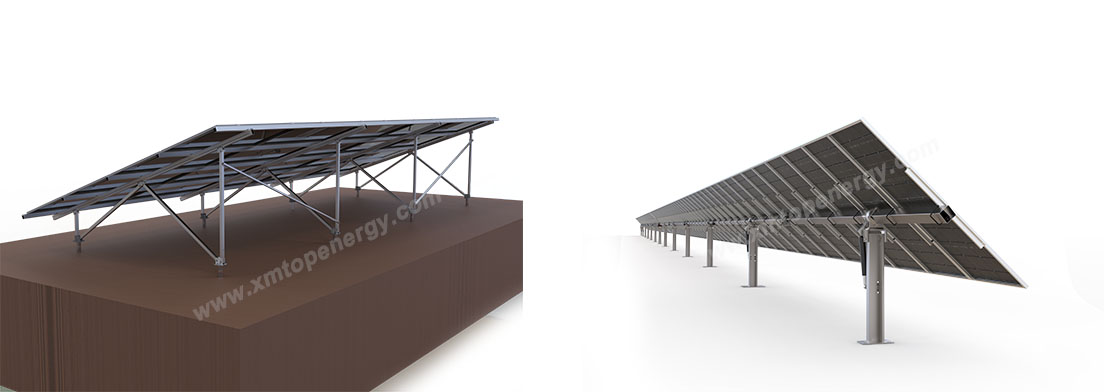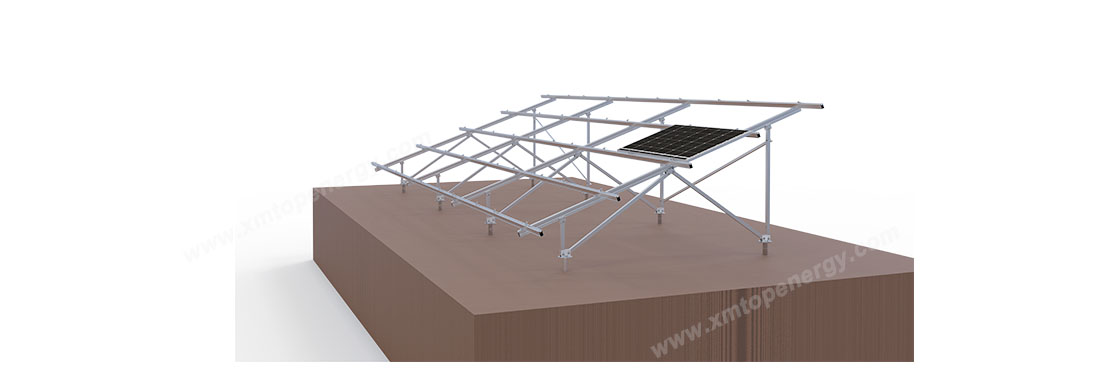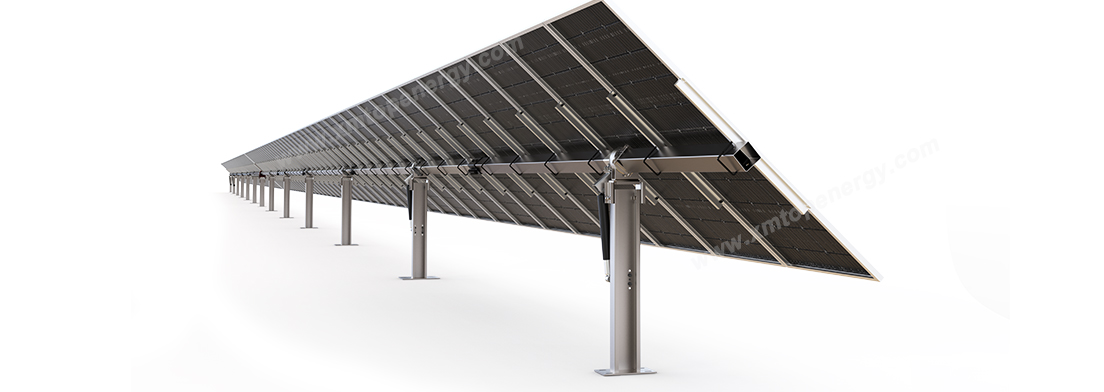When installing a ground-mounted solar system, one of the key decisions is choosing between a fixed-tilt and an adjustable solar racking system. Both options offer unique benefits and are suited for different environments and project goals. In this blog, we’ll explore the differences, advantages, and considerations to help you determine which type of ground mount solar system is the best fit for your needs.

A fixed-tilt solar system is designed with a set tilt angle that does not change throughout the year. The panels are positioned at an optimal angle based on the site’s latitude to maximize solar energy capture.
Lower Cost: Fixed-tilt systems are more affordable as they require fewer moving parts and simpler installation.
Low Maintenance: With no mechanical adjustments needed, these systems require minimal upkeep over their lifespan.
Reliable & Durable: Since there are no moving components, fixed-tilt structures are highly durable and can withstand extreme weather conditions.
Faster Installation: Pre-engineered tilt angles simplify the design and installation process, reducing labor costs.
· Less Energy Yield: Fixed panels cannot adjust to seasonal sun angles, which can result in lower efficiency compared to adjustable systems.
· Not Ideal for Seasonal Regions: In locations with significant seasonal variations in sunlight, energy production might not be optimized throughout the year.

An adjustable ground mount system allows users to change the tilt angle of the panels manually or automatically. These adjustments are typically made seasonally to optimize sunlight absorption during summer and winter months.
Higher Energy Output: Adjusting the tilt angle optimizes energy production year-round, increasing overall system efficiency.
Better Performance in Seasonal Climates: Adjustable systems compensate for sun angle variations, making them ideal for regions with harsh winters or long summers.
Maximizes ROI: Since they generate more energy, these systems deliver a better return on investment (ROI) over time.
· Higher Initial Cost: Adjustable mounts require more components, increasing material and installation expenses.
· Increased Maintenance: The system may need manual seasonal adjustments or mechanical servicing for automated adjustments.
· More Labor-Intensive: If the tilt is adjusted manually, it requires periodic intervention from the system owner or technician.

|
Feature |
Fixed-Tilt System |
Adjustable System |
|
Cost |
Lower upfront cost |
Higher initial investment |
|
Energy Output |
Consistent, but lower efficiency in winter/summer |
Optimized for year-round production |
|
Maintenance |
Minimal maintenance required |
Regular adjustments needed |
|
Installation |
Quick and simple |
More complex setup |
|
Best For |
Stable climates, low-maintenance systems |
Areas with seasonal sun variations |
You prefer lower upfront costs and minimal maintenance.
Your location has consistent sun exposure throughout the year.
You want a simple and durable system that requires little intervention.
You live in a seasonal climate where sun angles vary significantly.
You want maximum energy efficiency and a higher ROI over time.
You are willing to invest more initially for long-term performance gains.
Both fixed-tilt and adjustable ground mount solar systems offer unique benefits depending on your location, budget, and energy needs. If you seek a low-cost, low-maintenance option, a fixed-tilt system is ideal. However, if you want to maximize energy output and ROI, an Adjustable Solar Racking is the better choice.
Carefully consider your project goals, site conditions, and budget before making a decision. Whichever option you choose, both systems provide reliable solar power generation, helping you move toward sustainable and cost-effective energy solutions.

 Xiamen TopFence Co.,Ltd.
Xiamen TopFence Co.,Ltd. No. 77, LingXia South Road, Huli District, Xiamen City, Fujian, China
No. 77, LingXia South Road, Huli District, Xiamen City, Fujian, China Tel: +8613365923720
Tel: +8613365923720
 Email: info@xmtopfence.com
Email: info@xmtopfence.com
 IPv6 network supported Sitemap
| XML
| Blog
| Privacy Policy
IPv6 network supported Sitemap
| XML
| Blog
| Privacy Policy


